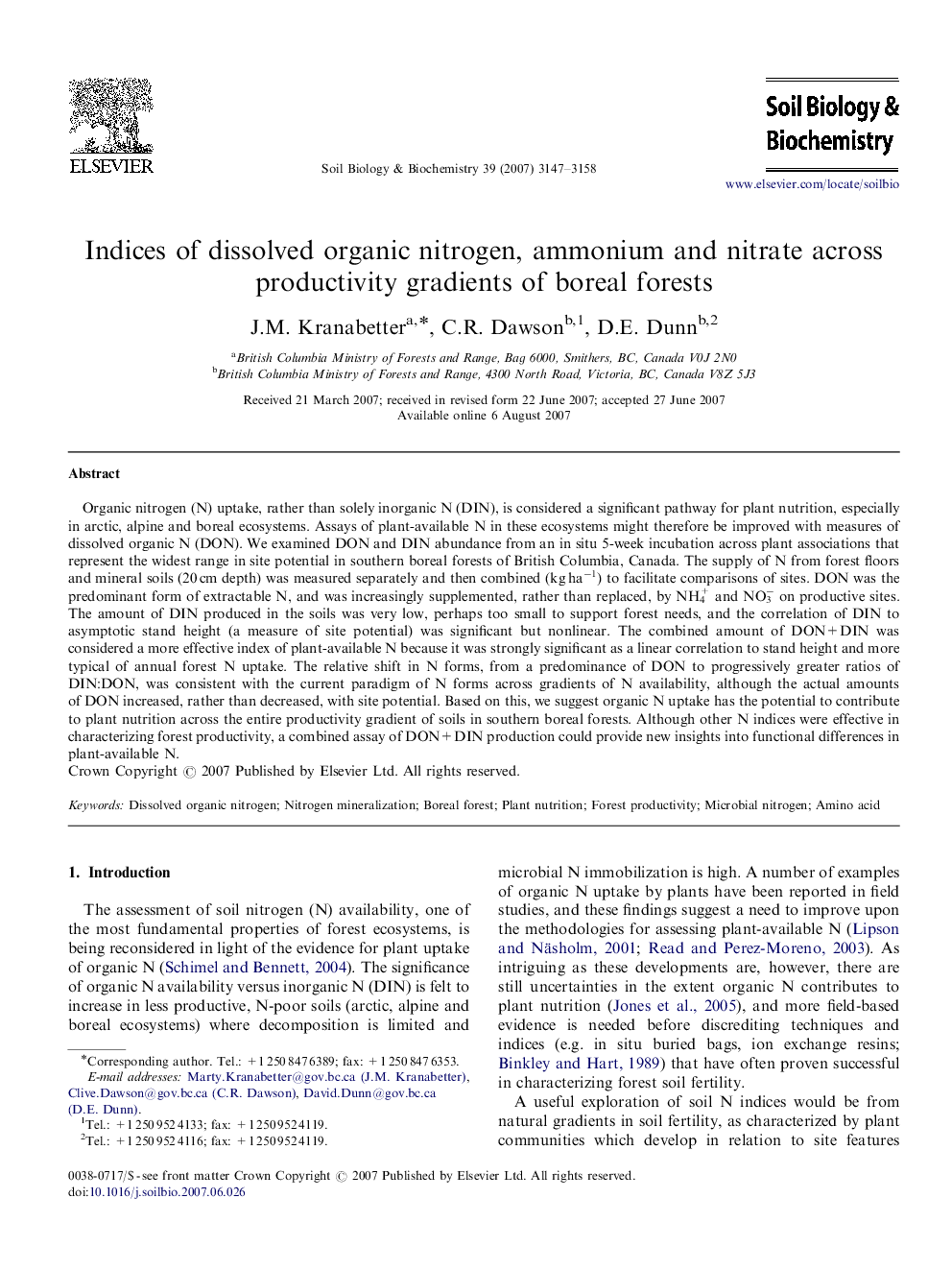| Article ID | Journal | Published Year | Pages | File Type |
|---|---|---|---|---|
| 2025555 | Soil Biology and Biochemistry | 2007 | 12 Pages |
Organic nitrogen (N) uptake, rather than solely inorganic N (DIN), is considered a significant pathway for plant nutrition, especially in arctic, alpine and boreal ecosystems. Assays of plant-available N in these ecosystems might therefore be improved with measures of dissolved organic N (DON). We examined DON and DIN abundance from an in situ 5-week incubation across plant associations that represent the widest range in site potential in southern boreal forests of British Columbia, Canada. The supply of N from forest floors and mineral soils (20 cm depth) was measured separately and then combined (kg ha−1) to facilitate comparisons of sites. DON was the predominant form of extractable N, and was increasingly supplemented, rather than replaced, by NH4+ and NO3− on productive sites. The amount of DIN produced in the soils was very low, perhaps too small to support forest needs, and the correlation of DIN to asymptotic stand height (a measure of site potential) was significant but nonlinear. The combined amount of DON+DIN was considered a more effective index of plant-available N because it was strongly significant as a linear correlation to stand height and more typical of annual forest N uptake. The relative shift in N forms, from a predominance of DON to progressively greater ratios of DIN:DON, was consistent with the current paradigm of N forms across gradients of N availability, although the actual amounts of DON increased, rather than decreased, with site potential. Based on this, we suggest organic N uptake has the potential to contribute to plant nutrition across the entire productivity gradient of soils in southern boreal forests. Although other N indices were effective in characterizing forest productivity, a combined assay of DON+DIN production could provide new insights into functional differences in plant-available N.
